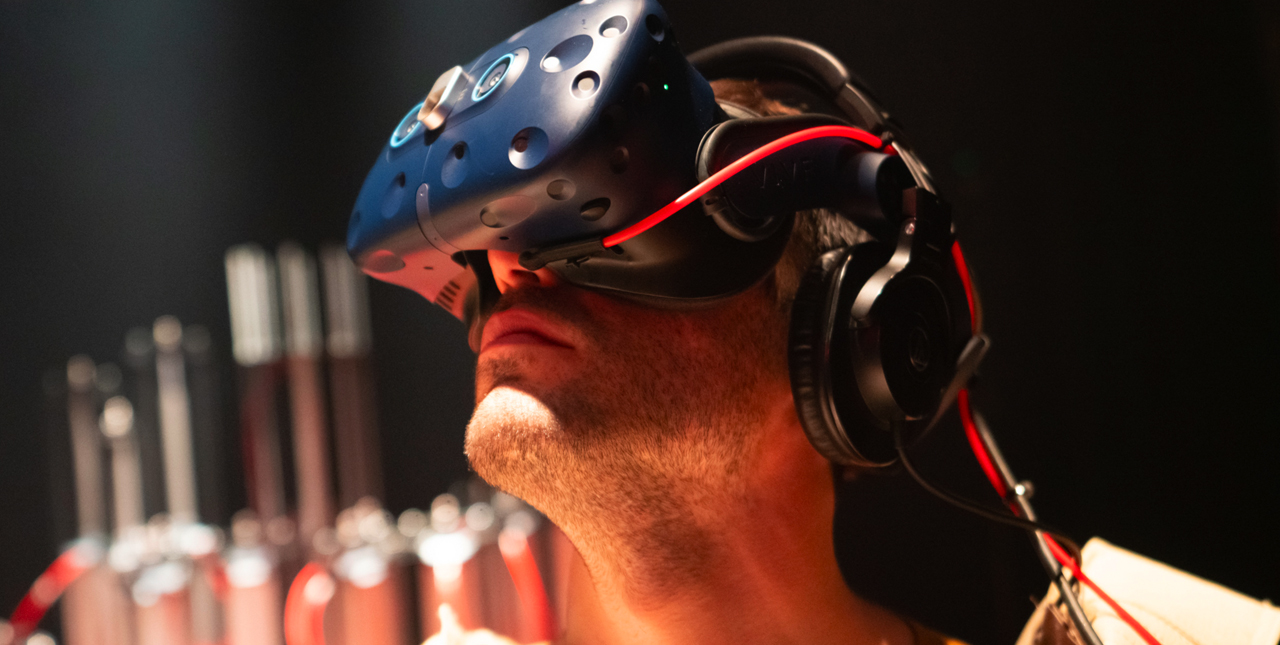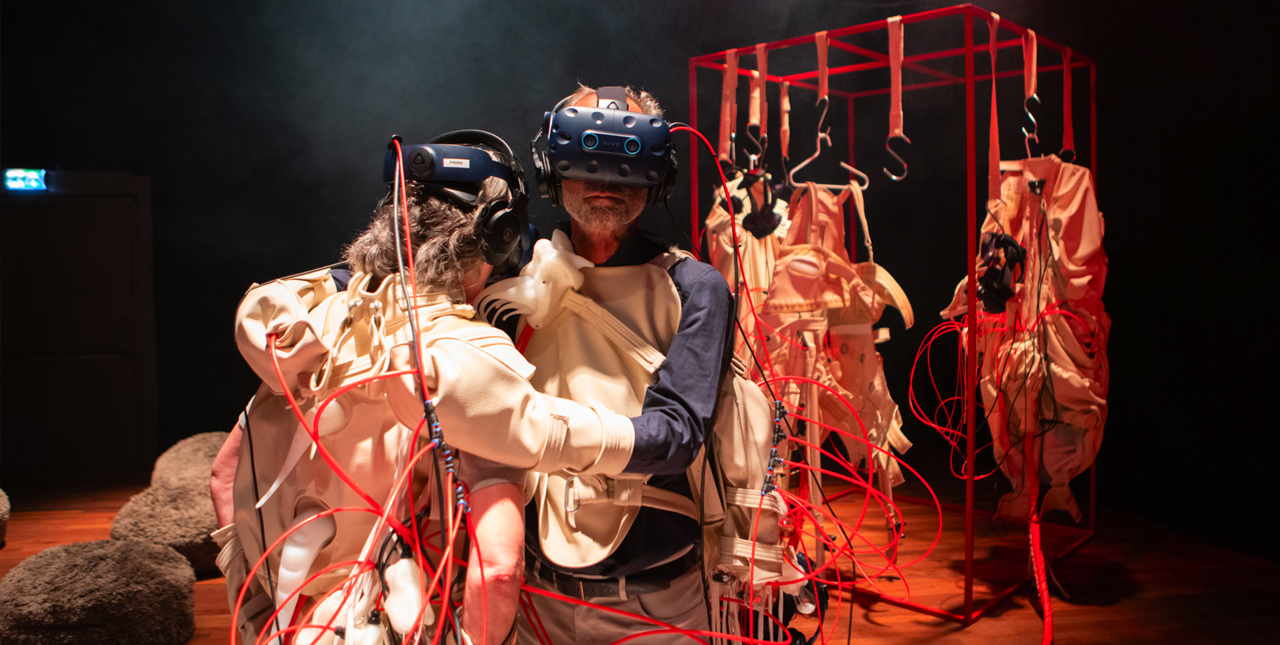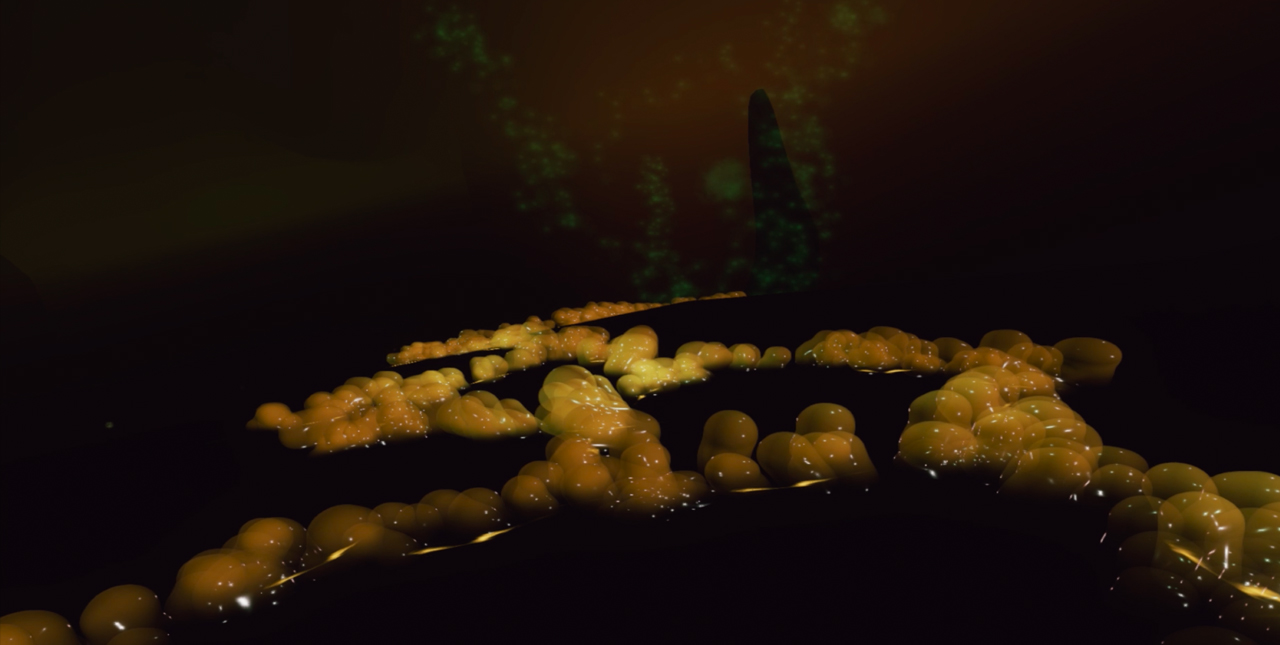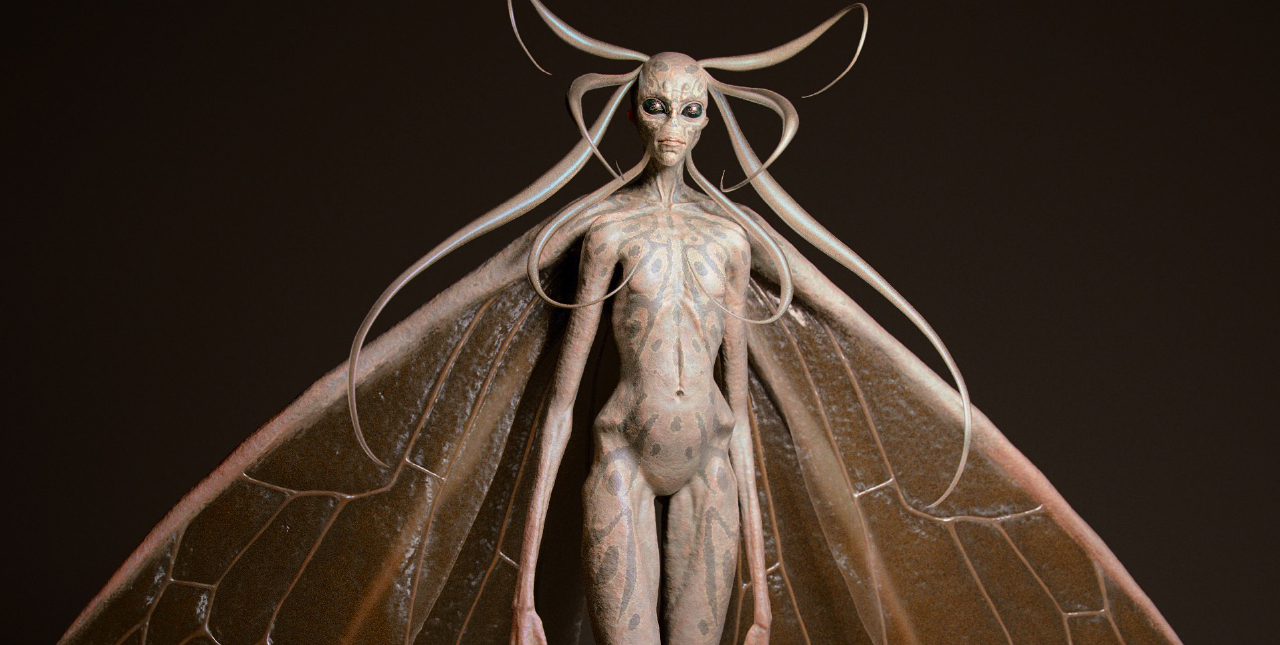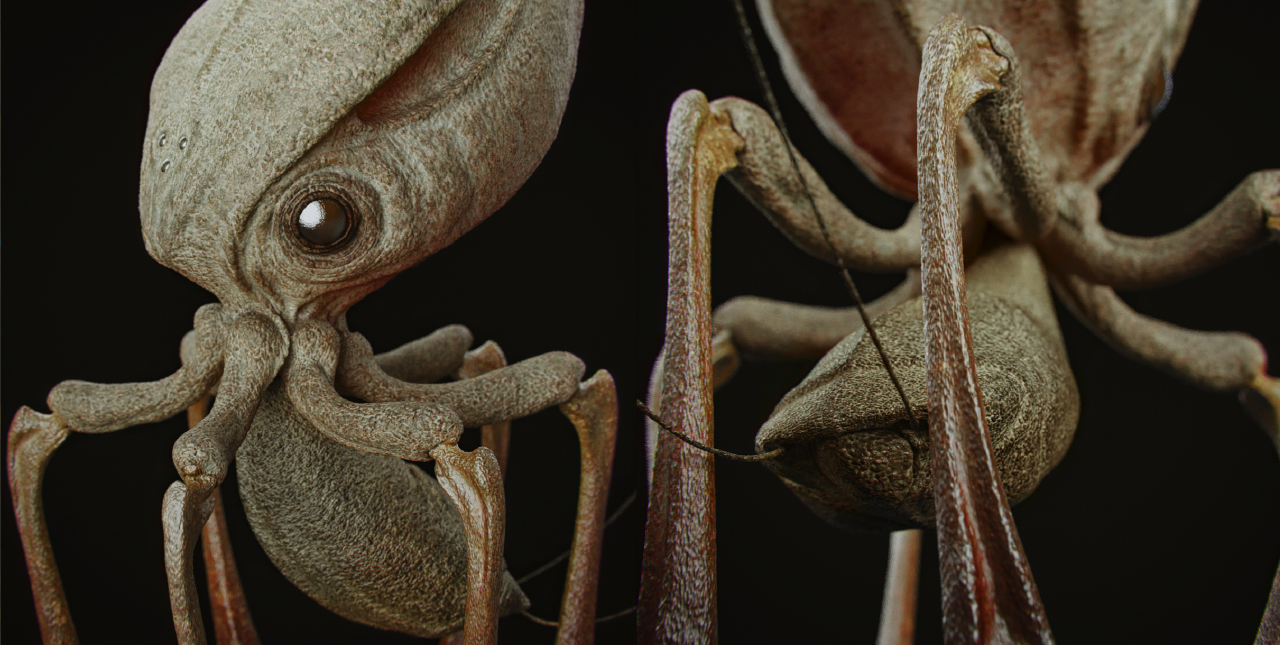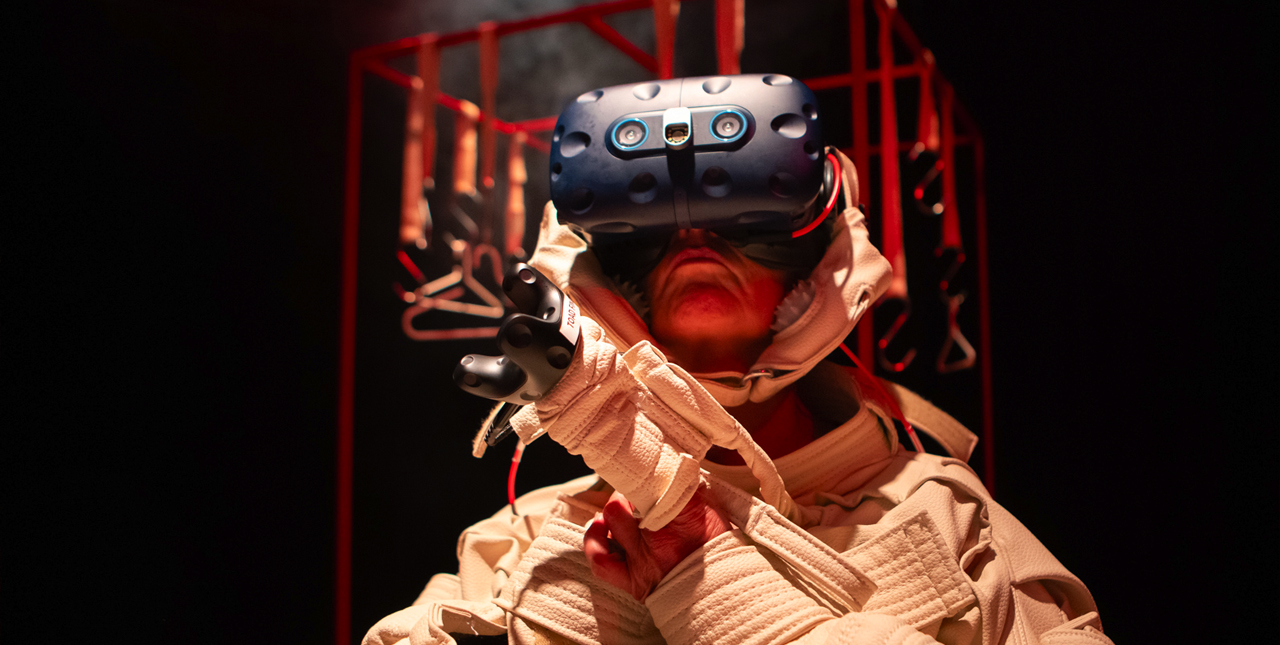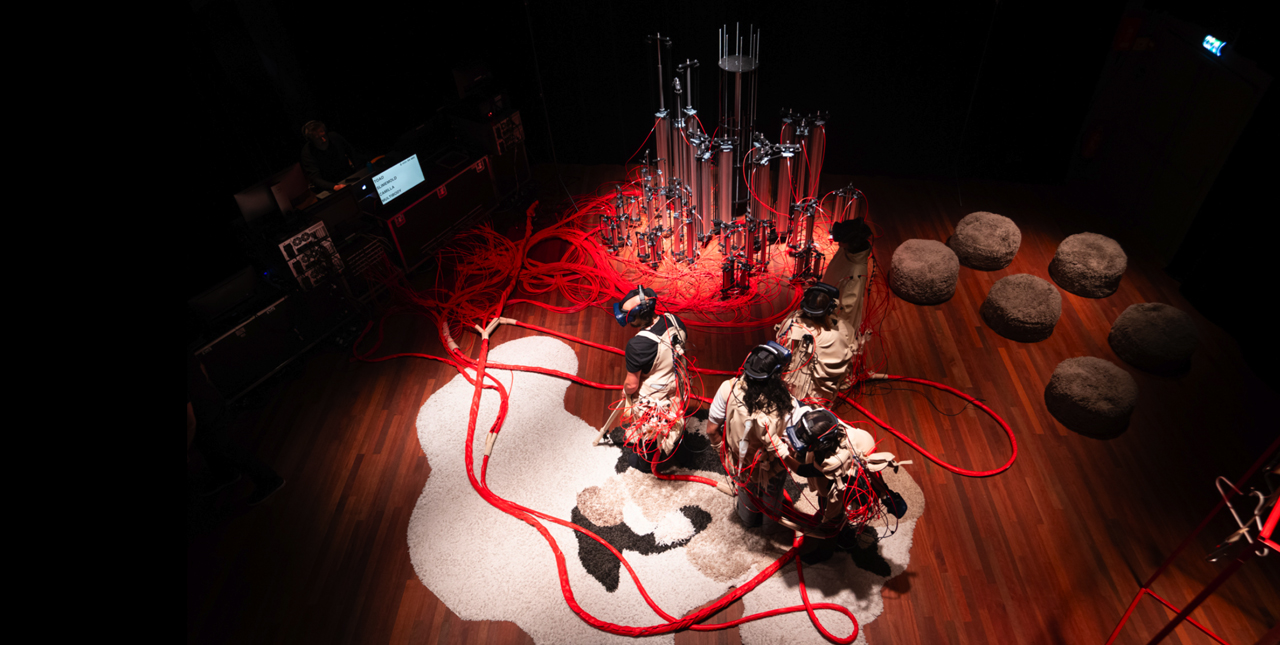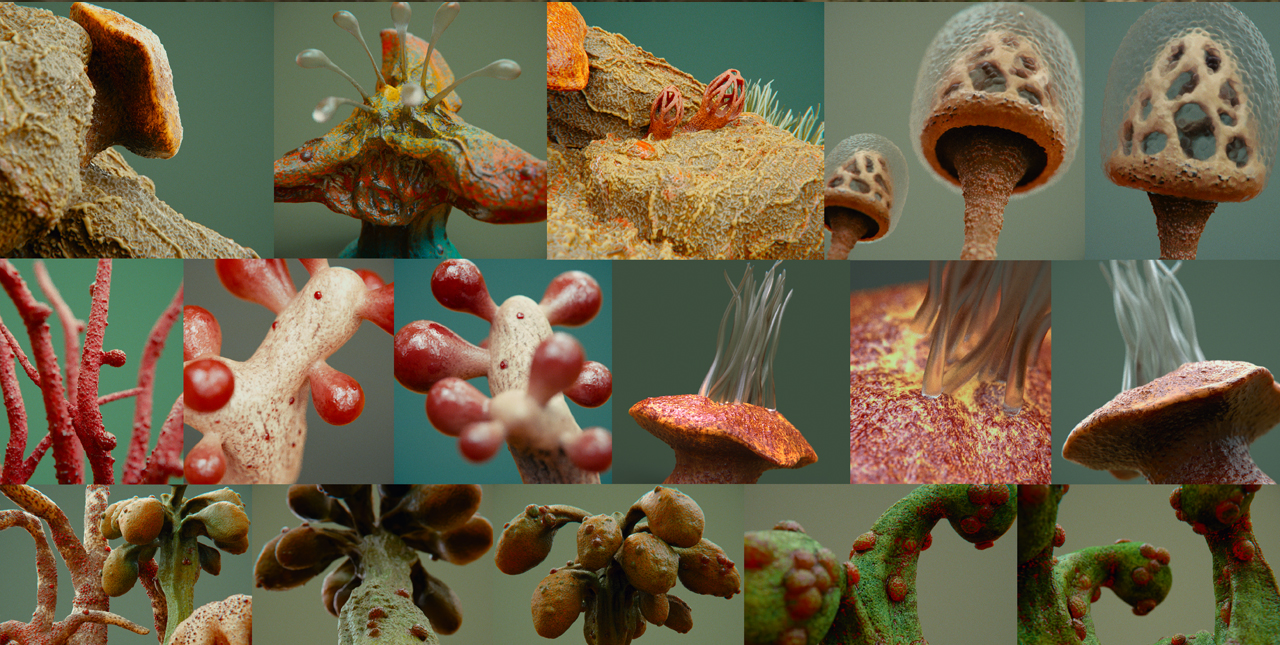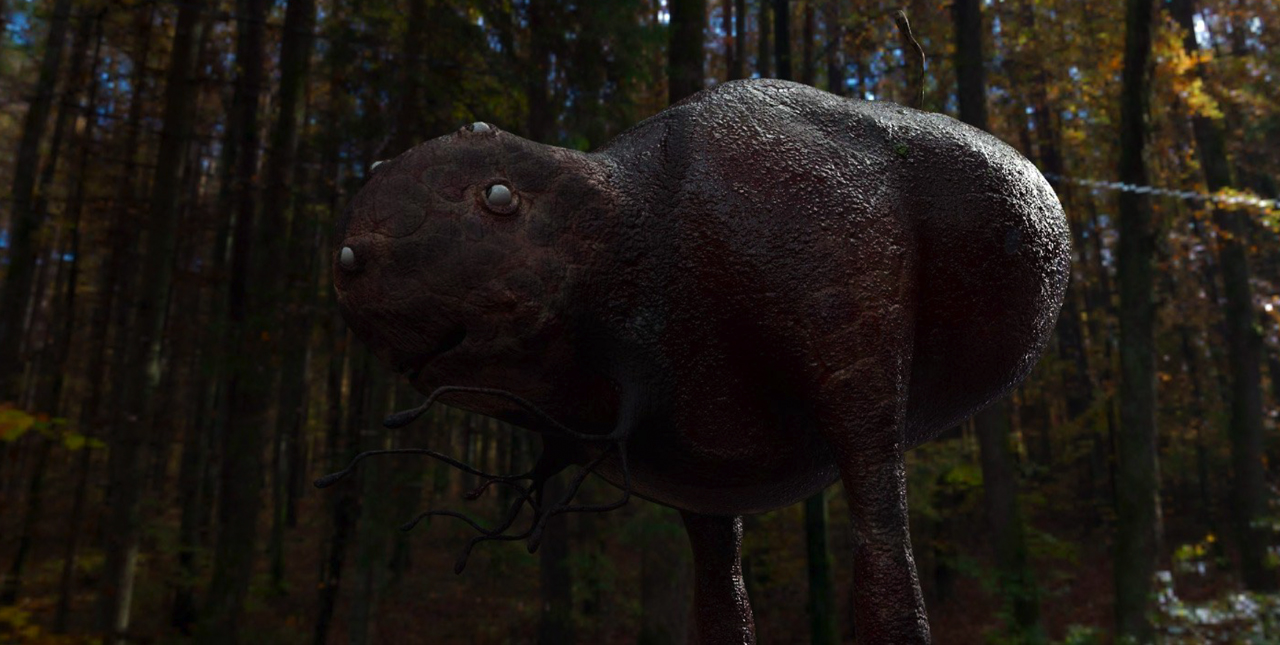Somewhere 200 years in the future, on the ruins of an inhospitable Anthropocene, after climate change has changed the world beyond recognition, Symbiosis takes place. This post-human biotope might be rich and teaming with new artificial or enhanced biochemical life: new genetically altered life forms, (chemical) robots, hybrid technologies, and/or autonomous intelligent systems. They are all sharing resources, habitats, bodies and information in an inclusive way on the premise of: Symbiosis.
Symbiosis is a performative, multiuser and multisensory VR installation in which the human body will be redesigned. It allows every participant to embody a post-human or even nonhuman reality: a completely symbiotic human-animal or human-technologic relationship. Dutch experience design collective POLYMORF investigates in a speculative way how a more symbiotic exchange of genetic, cultural and technological traits between people and other present or future living entities can increase or change the agency of all. How will such affect future coexistence, legal rights and relationships between humans and all other living entities on a physical, emotional and spiritual level?
Symbiosis uses VR as a theatrical and philosophical tool to design an embodied multi-sensory experience. Within Symbiosis, the visitor is both spectator and performer. The installation consists of a performative space that offers a multi-user VR experience. Each experience is describing a specific symbiotic human-animal or human-technologic relationship. By choosing one of the stories, the visitor selects a character and role in the overall story world. All participants play a different symbiotic role in each other's individual lives and all characters come together at the end of the experience to join in a shared food experience. Within the performance, the physical body of the visitor is used as a muscle to control his/her speculative virtual body. Each experience will come with a uniquely designed soft robotic wearable enabling various haptic bodily interactions manipulations and interactions.
The individual VR experiences build towards a collective eating ritual, sharing virtual and real foods, and the virtual body as food. For this, a series of specially designed snacks will infuse the virtual food with unexpected taste sensations.The all-vegetarian snacks are designed by Dutch Michelin-starred restaurant Karpendonkse Hoeve master chefs. Symbiosis is inspired by Donna Haraway's book Staying With The Trouble and The Camille Stories: Children of Compost making physically tangible posthuman body architectures within a post humanistic social context, questioning current Humanistic, Anthropocentric and Liberal beliefs. cheack for more info www.symbiosis.show
Symbiosis won the IDFA Special jury award for by creative technology in the Immersive non fiction cathegory. Read the Idfa Jury report
................................................................................................................................................
SYMBIOSIS
Is designed and produced by Polymorf in collaboration with Studio Biarritz.
Concept, scenario and art direction: Marcel van Brakel
Directed by: Marcel van Brakel and Mark Meeuwenoord
Coding pneumatics engineering and sound design: Mark Meeuwenoord
Interaction: coding and hardware integration: Luciano Pinna, Frank Bosma en Wijnand van Tol
3D Lead designer: Roberto Digiglio
Wearables: Maurice Spapens
Food design: Karpendonkse Hoeve
Producer: Corine Meijers
Sales and partnerships: Marieke Nooren
3D modeling and animation: Martijn Zandvliet, Edwin Kuipers, Hauke Boer and Tim van Nielen
Soft robotics: Marcel van Brakel, Pom Smit, Ruben Maas
Hardware: Scott van Haastrecht
Additional design team:, Nienke Markus, Mel Reaven, Gal Kinan, Wouter van Meegdenburg, Elja Rutters, Richelle Smits, Paul Staring, Bram Ockeloen, Lucas Groothuis, Indy van Casteren.
Voice artist onboarding: Louise Porter
Voice artist Colorado river toad: Molly O'Blivion
voice artist slime mold: Holly Habstritt Gaal
voice artist Camila: Anahita Mekanik
voice artist Multibody, the mother: Janet Peters
Voice artist Multibody, the daughter: Maya Hawke
Voice artist Multibody, the lover: Querida Lu Ahn Funck
voice artist Multibody, the anglerfish: Brian Dives
Publication:Rob van Hoesel (TEC Books) and Joost Broeren
Digital strategy: Nienke Huitenga
Commissioned by:
STRP and Breda Photo
Partners:
IDFA Doclab & MIT Media Lab
Financially supported by:
Film Fund NL and Creative Industries Fund NL
Amsterdam Fund for the Arts (AFK)
Presented at the Sundance Institute New Frontier Story Lab 2020
and the Venice Gap-Financing Market 2021
Special thanks to: Ingrid van Eeghem, Jaap Krabbendam, Wander Eikelboom, Theo Andriessen, Ton van Gool, Gieske Bienert and Synchron. MU Hybrid Art House, EYE and (Im)possible Bodies, Donna Haraway and Duke University press for allowing the use of ideas from " The Camille Stories: Children of Compost," in Staying with the Trouble, written by Donna Haraway. Copyright, 2016, Duke University Press
SYMBIOSIS is created by POLYMORF commissioned by STRP and Breda Photo.
Designed by: Marcel van Brakel, concept, scenario and art direction.
Mark Meeuwenoord, coding pneumatics engineering and sound design.
Luciano Pinna, interaction, coding and hardware integration. Edwin Kuipers, 3D modeling and animation. Karpendonkse Hoeve, food design. Corine Meyers, producer. Marieke Nooren, sales and partnerships. Maurice Spapens, soft robotic wearable’s.Additional design team, design research, 3D modeling and coding: Gal Kinan, Richelle Smits, Bram Ockeloen, Elja Rutters, Wouter van Meegdenburg. Special thanks to: Rob van der Veeken & Ingrid van Eeghem, Wander Eikelboom, Theo Andriessen, Ton van Gool and the STRP team, Gieske Bienert and Synchron.
SYMBIOISIS has been made possible with funding from Nederlandse Film Fonds and Stimuleringsfonds Creatieve Industrie. Also Thanks to Donna Haraway and Duke University press for allowing the use of ideas from " The Camille Stories: Children of Compost," in Staying with the Trouble, written by Donna Haraway. Copyright, 2016, Duke University Press.
SHOWS
2024 Playgrounds (NL)
2023 RIO Innovation Week (BR), Waag Amsterdam Museum night (NL), CHANEL Curated by Future Of Storytelling (UK), SXSW (US) exhibition show and SXSW, Panel with IDFA Doclab and talk at New Dutch Wave.
2022 Pamcut Portland Art Museum (US), Holland festival (NL), Nederlands Film Festival (NL) Betweter (NL)
2021 Noorderlicht (NL), Eye Cinema Ecologica, (NL) IDFA DOCLAB (NL) Selected for
competition, exhibition, and talk. Selected for Venice Biennale Gab Financing Market.
2020 Selected for New Frontier Lab, Sundance institute US), Breda Photo (NL)
expo and talk, Impossible Bodies (NL) exposition and talk, Dutch Design Week
(NL), IDFA DOCLAB (NL) Selected for competition, forum, exhibition, and talk.
